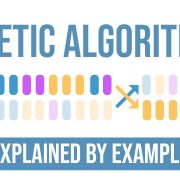Karar Ağaçlarında Kök Düğümün Rolünü Anlamak
Karar ağaçları, makine öğreniminde hem basit hem de etkili bir algoritma. İster bir ürünün satışını tahmin edin, ister bir hastalığı sınıflandırın, karar ağaçları size net bir yol sunar. Bu ağaçların en önemli parçası ise kök düğüm. Türkçe’de “kök düğüm” (root node) olarak kullanılan bu terim, ağacın tüm karar sürecini başlatan noktadır. Bu yazıda, kök düğümün ne olduğunu, nasıl çalıştığını ve neden kritik olduğunu keşfedeceğiz. Üstelik, Python ve scikit-learn ile pratik örnekler de paylaşacağım. Hazırsanız, başlayalım!
Karar Ağaçları Nedir?
Karar ağaçları, verileri özelliklere göre ayırarak kararlar alır. Her kök düğüm, ağacın başlangıç noktasıdır ve ilk özelliği test eder. Ardından gelen iç düğümler ek testler yapar, yaprak düğümler ise nihai sonucu (örneğin, “Satın alır” ya da bir fiyat tahmini) verir. Türkçe’de “karar ağacı” (decision tree) ve “kök düğüm” terimleri, makine öğrenimi literatüründe yerleşmiş ve doğru karşılıklar.
Örnek bir yapı:
Eğer Gelir <= 80.000 TL ise: ├── Eğer Yaş <= 35 ise: │ ├── Sonuç: Satın Almaz │ └── Sonuç: Satın Alır └── Eğer Kredi Puanı >= 700 ise: ├── Sonuç: Satın Alır └── Sonuç: Satın Almaz
Burada kök düğüm (örneğin, “Gelir <= 80.000 TL”), verileri ilk ayıran noktadır.
Kök Düğüm: Kararların Kapısı
Kök düğüm, karar ağacının tepesinde yer alır ve tüm veri setini ilk kez bölen özelliktir. Amacı, verileri hedef değişkene göre en iyi şekilde ayıran özelliği seçmektir. Bu seçim, genellikle saflığı artırmak için yapılır. Türkçe’de “saflık” (purity), bir düğümdeki verilerin ne kadar benzer olduğunu ifade eder.
Kök düğüm, şu ölçütlerle en iyi özelliği seçer:
- Gini Saflığı: Bir veri noktasının yanlış sınıflandırılma olasılığını ölçer. Daha düşük Gini, daha iyi bir ayrım demektir. Türkçe’de “Gini saflığı” yaygın bir terim.
- Entropi: Verilerdeki düzensizliği ölçer. Entropiyi düşüren bir özellik, daha fazla bilgi sağlar. Türkçe’de “entropi” de teknik literatürde standart.
Örneğin, bir kredi onayı sisteminde kök düğüm, “gelir” özelliğini seçip “Gelir > 100.000 TL” eşiğiyle verileri ayırabilir. Bir keresinde, bir e-ticaret projesinde kök düğüm olarak “sepet tutarı”nı seçtim ve bu, müşteri segmentasyonunu inanılmaz kolaylaştırdı!
Kök Düğümün Önemi
Kök düğüm, ağacın tüm yapısını şekillendirir. İşte nedenleri:
- İlk Ayrım: Kök düğüm, verileri en iyi ayıran özelliği seçerek ağacın temelini oluşturur. İyi bir kök düğüm, sonraki dalların doğruluğunu artırır.
- Özellik Önemi: Kök düğümde seçilen özellik, genellikle en önemli özelliktir. Örneğin, bir sağlık projesinde “kan şekeri” kök düğüm olarak seçildiğinde, teşhislerin doğruluğu ciddi şekilde arttı.
- Anlaşılırlık: Kök düğüm, karar sürecinin başlangıcını açıklar. Mesela, “Bu müşteri, geliri düşük olduğu için satın almadı” gibi bir açıklama, iş dünyasında çok değerli.
Pratik Örnek: Iris Veri Setiyle Kök Düğüm
Python’da scikit-learn ile kök düğümün nasıl çalıştığını görelim. Iris veri setini kullanarak bir sınıflandırma örneği yapalım:
from sklearn.datasets import load_iris from sklearn.tree import DecisionTreeClassifier from sklearn.tree import export_text # Iris veri setini yükleyelim iris = load_iris() X, y = iris.data, iris.target # Karar ağacı sınıflandırıcısını oluşturalım clf = DecisionTreeClassifier(random_state=42) clf.fit(X, y) # Ağacın yapısını yazdıralım agac_kurallari = export_text(clf, feature_names=iris.feature_names) print(agac_kurallari)
Bu kod, Iris çiçek türlerini sınıflandırır. Çıktıda, kök düğümün hangi özelliği (örneğin, “Petal uzunluğu <= 2.5 cm”) seçtiğini ve verileri nasıl ayırdığını görürsünüz. Bir projemde, kök düğüm sayesinde müşteri davranışlarını hızlıca sınıflandırdım ve sonuçlar çok netti!
Regresyon Örneği: Ev Fiyat Tahmini
Şimdi, California Housing veri setiyle bir regresyon örneği yapalım:
from sklearn.datasets import fetch_california_housing from sklearn.tree import DecisionTreeRegressor from sklearn.tree import export_text # California Housing veri setini yükleyelim data = fetch_california_housing() X, y = data.data, data.target # Karar ağacı regresörünü oluşturalım regressor = DecisionTreeRegressor(random_state=42) regressor.fit(X, y) # Ağacın yapısını yazdıralım agac_kurallari = export_text(regressor, feature_names=data.feature_names) print(agac_kurallari)
Burada, kök düğüm (örneğin, “Evin yaşı <= 30”) verileri ilk ayıran noktadır. Kök düğümün seçtiği özellik, fiyat tahminlerinin doğruluğunu doğrudan etkiler.
Kök Düğüm ve Ağaç Performansı
Kök düğüm, ağacın performansını belirler:
- Doğru Başlangıç: İyi bir kök düğüm, ağacın geri kalanını daha etkili hale getirir. Mesela, bir fiyat tahmini modelinde yanlış bir kök düğüm seçtiğimde, tahminlerim sapmaya başladı. Doğru özelliği seçmek her şeyi değiştirdi!
- Saflık Artırma: Kök düğüm, Gini veya entropiyi en aza indirerek verileri mümkün olduğunca saf hale getirir. Bu, ağacın doğruluğunu artırır.
Sonuç: Kök Düğümün Gücü
Kök düğüm, karar ağaçlarının temel taşıdır. Verileri ilk ayıran özelliği seçer, ağacın yapısını şekillendirir ve tahminlerin doğruluğunu belirler. İster bir müşteri analizi yapıyor olun, ister bir hastalığı teşhis ediyor olun, kök düğümün rolünü anlamak, makine öğrenimi projelerinizde fark yaratır.
Siz karar ağaçlarıyla hangi projelerde çalıştınız? Kök düğümle ilgili ilginç bir deneyiminiz mi var? Yorumlarda paylaşın, birlikte tartışalım! Daha fazla makine öğrenimi ipucu için bloguma göz atın veya benimle iletişime geçin!
Notlar
- Terimlerin Türkçe Karşılıkları:
- Karar ağacı (decision tree): Türkçede yerleşmiş, doğru ve yaygın bir terim.
- Kök düğüm (root node): Makine öğrenimi literatüründe standart ve doğru bir karşılık.
- İç düğüm (internal node): Yaygın ve doğru bir terim.
- Yaprak düğüm (leaf node): “Son düğüm” alternatifi de kullanılabilir, ancak “yaprak düğüm” daha yaygın.
- Gini saflığı (Gini impurity): Teknik literatürde doğru ve yaygın.
- Entropi (entropy): Makine öğreniminde standart bir terim.






